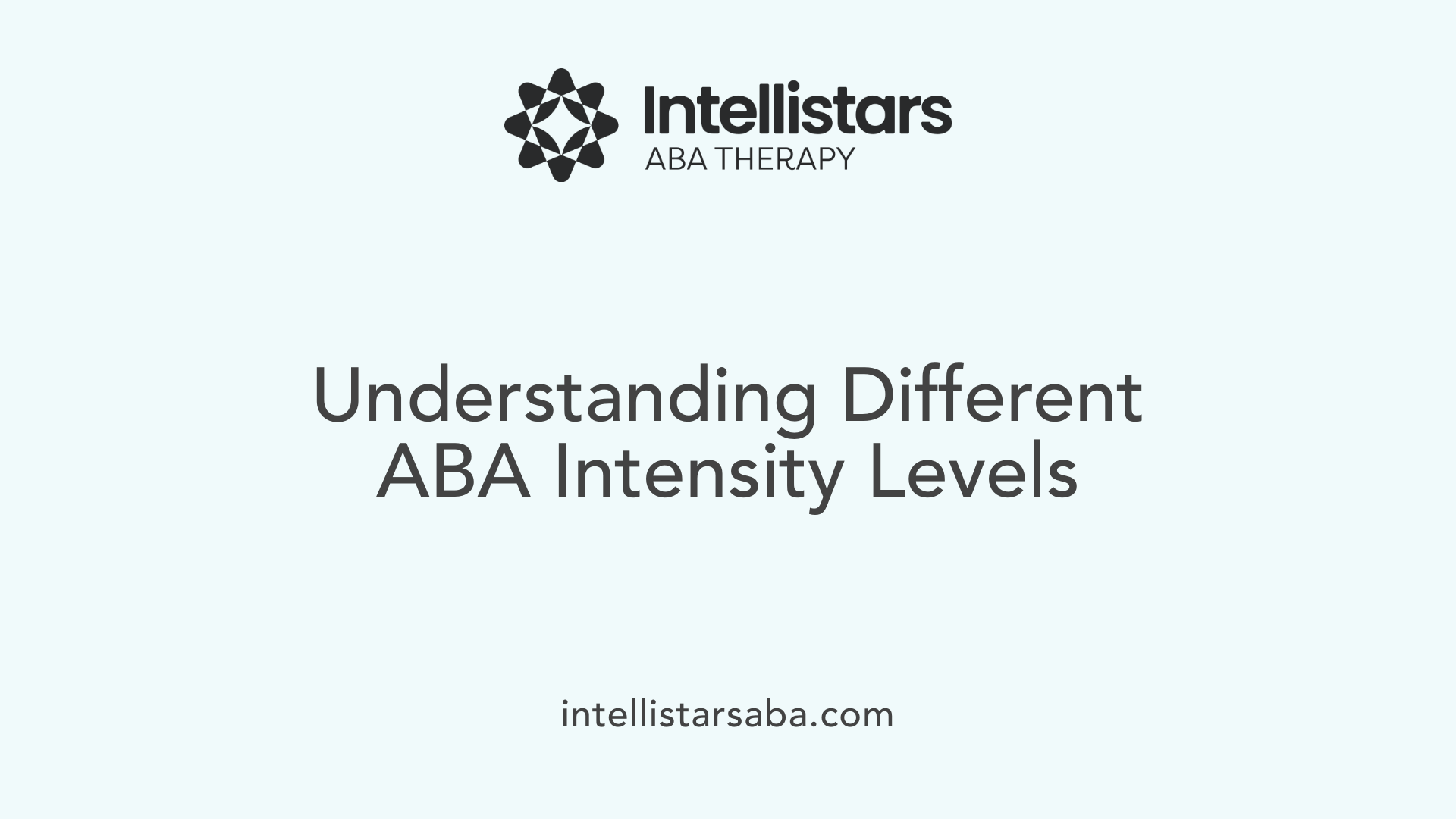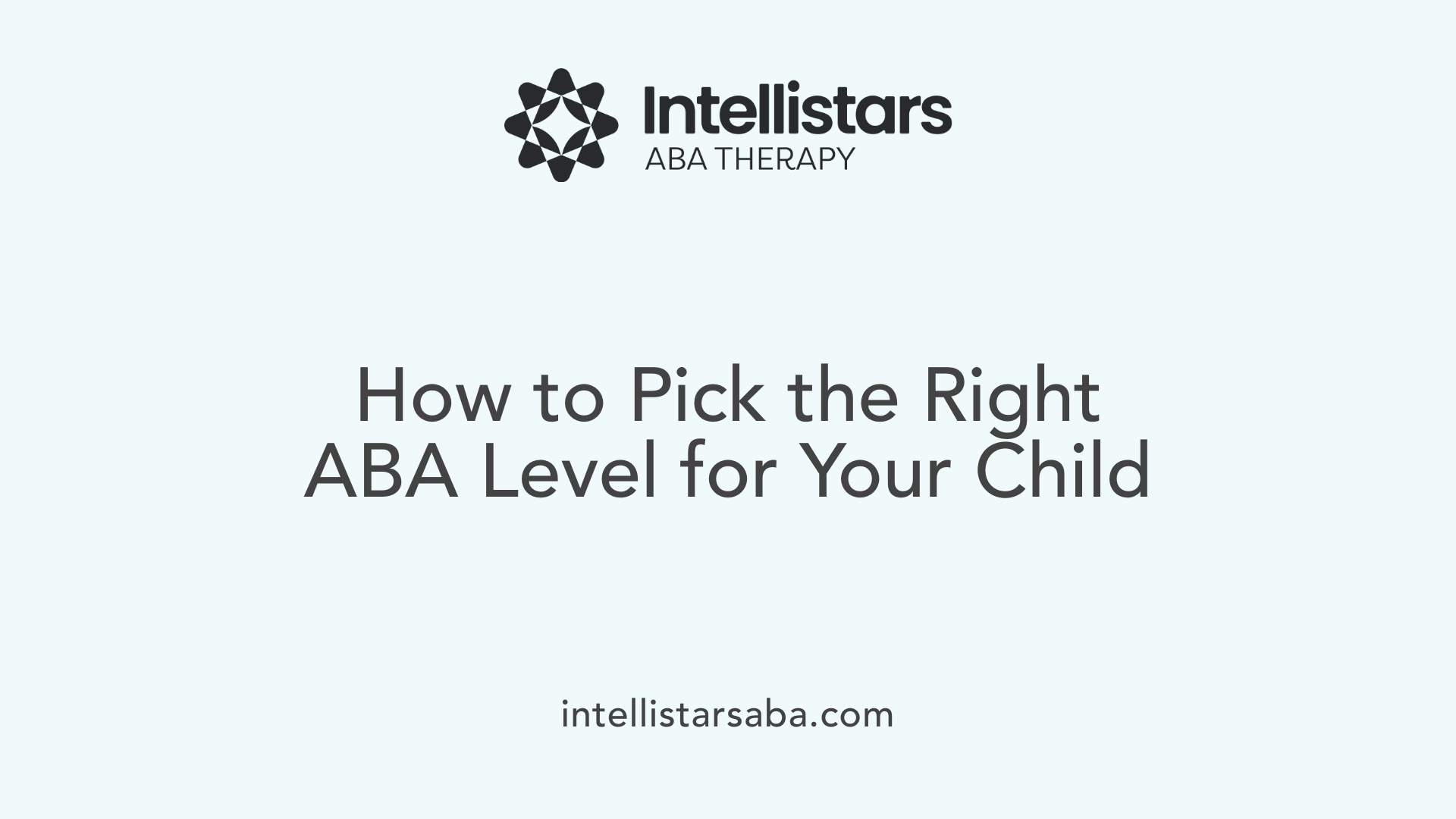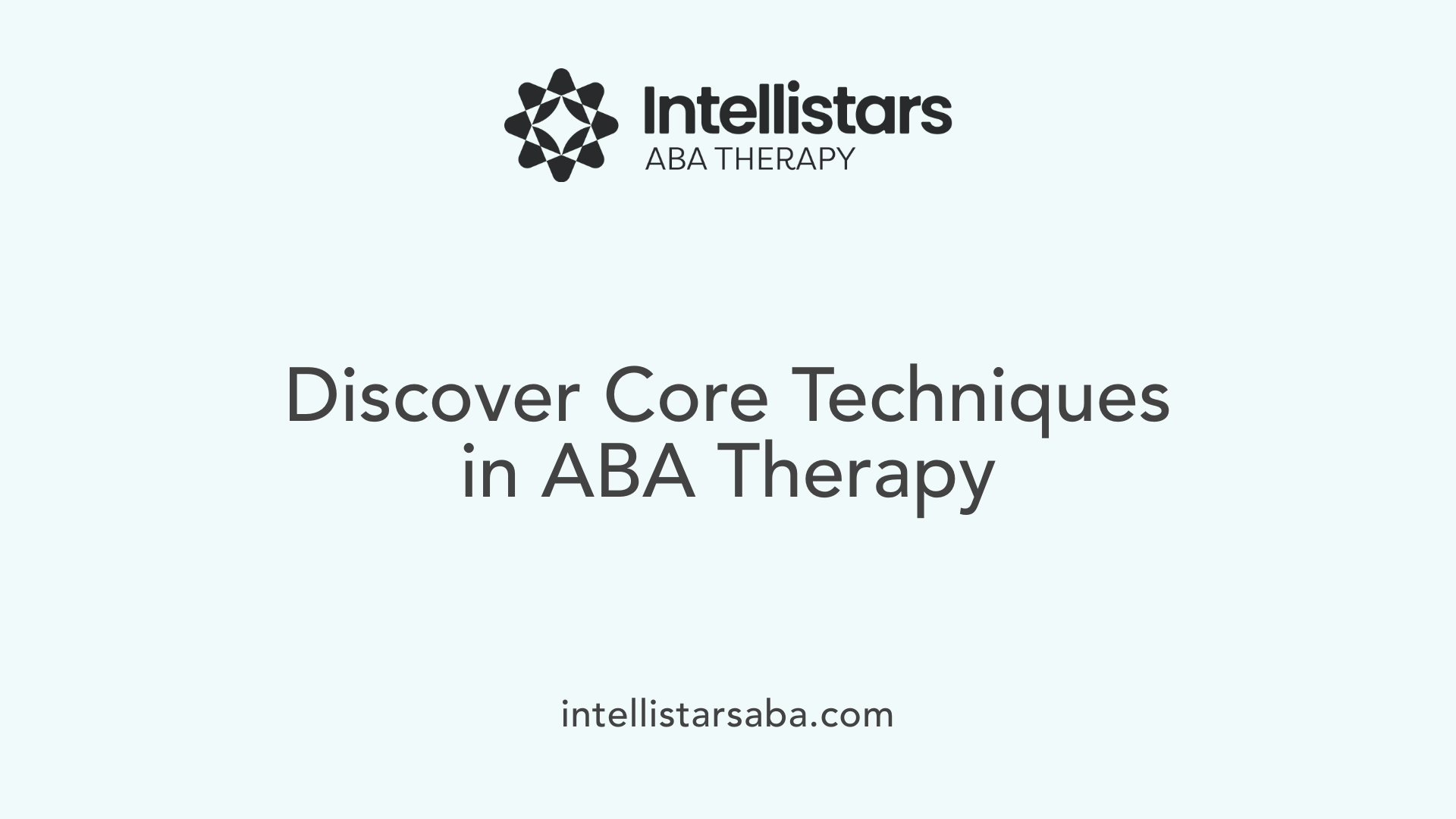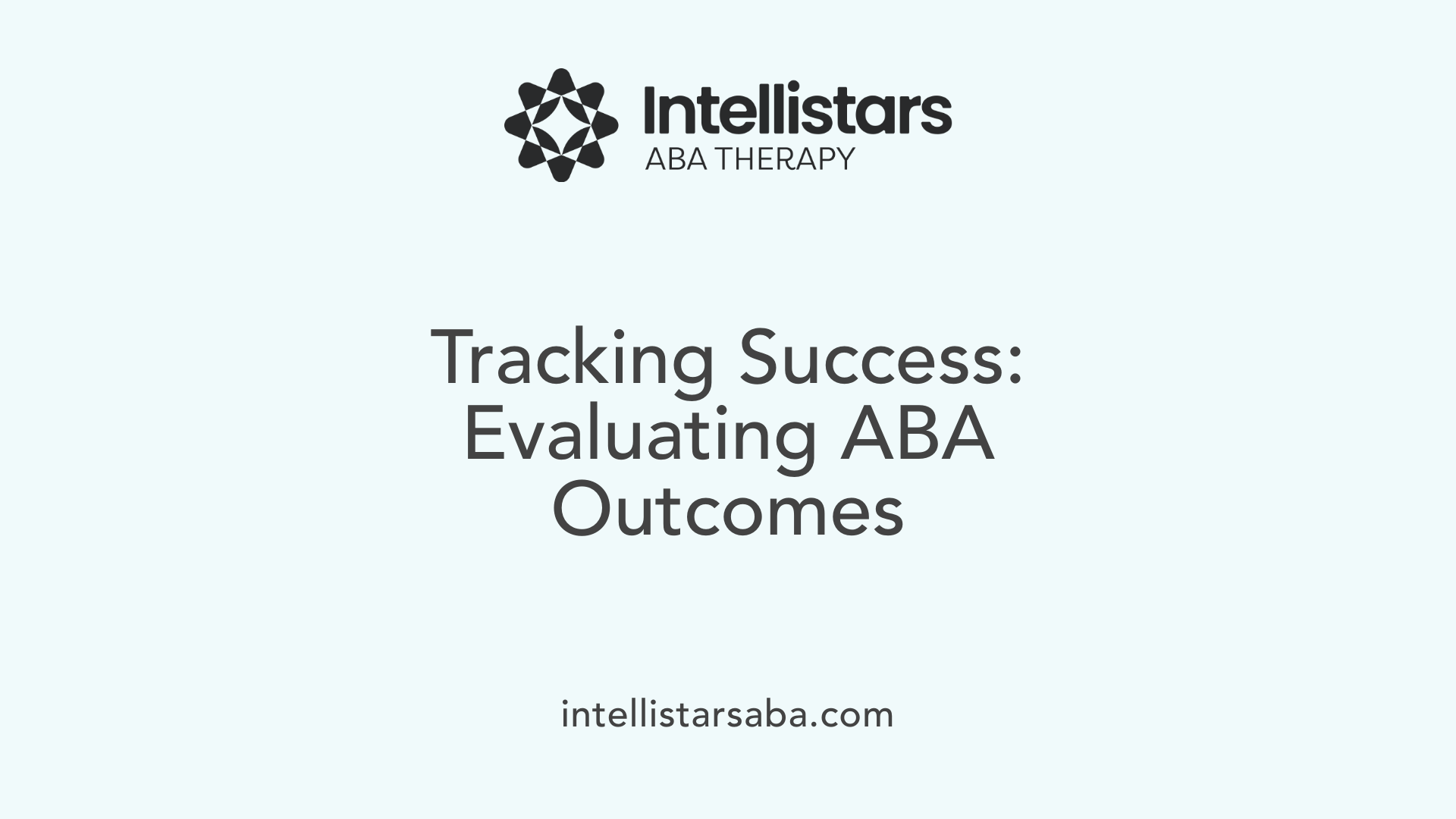Understanding ABA Therapy Intensity Levels
Applied Behavior Analysis (ABA) therapy is a cornerstone treatment for individuals with Autism Spectrum Disorder (ASD), designed to enhance essential skills and reduce challenging behaviors through evidence-based methods. The intensity of ABA therapy varies widely depending on individual needs, age, and goals, ranging from focused, short-term interventions to comprehensive, highly intensive programs. This article unpacks the different levels of ABA therapy intensity, their applications, and what families and caregivers can expect from each approach.
What Is Behavioral Analysis Therapy for Autism?
What is behavioral analysis therapy for autism?
Behavioral analysis therapy for autism, known as Applied Behavior Analysis (ABA), is a science-based method designed to support individuals with Autism Spectrum Disorder (ASD). Its main goal is to increase positive behaviors such as communication, social skills, and everyday living abilities, while reducing behaviors that may interfere with learning or socialization.
What are the core principles and methodology of ABA therapy?
ABA is rooted in learning theory and behavior analysis principles. It uses systematic observation, measurement, and data-driven decision making to design personalized treatment plans. Key features include reinforcing desired behaviors, breaking skills into manageable steps, and promoting generalization so learned skills apply in different settings.
In what settings is ABA therapy delivered?
ABA therapy can be administered across various environments, including the home, school, or community. Depending on the child's needs, therapy ranges from intensive programs providing up to 40 hours per week to short-term focused interventions targeting specific skills.
What techniques are commonly used in ABA therapy?
Techniques include Discrete Trial Training (DTT), which uses structured teaching trials; Pivotal Response Training (PRT), a naturalistic approach encouraging motivation; and Functional Communication Training (FCT), which focuses on improving communication skills. Therapists often combine these to create a comprehensive learning environment.
What evidence supports the effectiveness of ABA therapy?
Research shows that early and intensive ABA therapy results in meaningful gains in cognitive, language, social, and adaptive behaviors in 63% to 88% of cases studied. While more rigorous large-scale studies are ongoing, the accumulated data supports ABA as an effective treatment for children with autism, particularly when started early.
Providers of Autism Behavioral Analysis Therapy

Who provides autism behavioral analysis therapy?
Autism behavioral analysis therapy, or ABA therapy, is delivered by specialized professionals trained in behavioral analysis. The primary providers are Board Certified Behavior Analysts (BCBAs), licensed psychologists, and therapists who have expertise in autism spectrum disorder (ASD). These professionals conduct comprehensive assessments, develop tailored treatment plans, and implement ABA interventions.
ABA therapy is available in multiple settings, including clinics, homes, schools, and community environments. This flexibility allows therapy to be adapted to natural situations and ensures generalization of learned skills.
Caregivers and family members play an essential role as partners in the therapy process. They are often trained to reinforce skills and behaviors in daily routines and help support progress outside formal sessions.
Certification and supervision are vital components of ABA therapy quality. Licensed behavior analysts and certified practitioners maintain professional credentials and oversee therapy delivery. Supervision ensures fidelity to treatment plans and adherence to ethical standards.
Thus, effective ABA therapy depends on a team of certified professionals collaborating with families in varied settings to promote skill development and behavioral improvements for individuals with ASD.
Levels and Types of ABA Therapy Intensity

What Are the Differences Between Comprehensive and Focused ABA Therapy?
ABA therapy is broadly categorized into comprehensive and focused approaches, each designed to meet distinct needs. Comprehensive ABA therapy targets multiple developmental areas such as communication, social skills, and adaptive behaviors simultaneously. It is intensive, typically involving 20 to 40 hours per week, and is often recommended for children aged 0-7 years, especially those with significant support needs.
Focused ABA therapy, on the other hand, zeroes in on specific skills or behavioral challenges. It requires fewer hours—usually between 10 and 25 per week—and is flexible enough to serve individuals across all ages. This approach is suitable for targeted concerns like reducing self-injury or enhancing social interaction.
How Does ABA Intensity Vary by Hours per Week?
ABA therapy intensity varies primarily with the approach and the individual's developmental stage. Comprehensive models, such as Early Intensive Behavioral Intervention (EIBI), commonly involve 30 to 40 hours weekly over several years and emphasize early, sustained intervention.
Focused interventions are shorter-term and less intensive, generally ranging from 10 to 20 hours per week. Naturalistic teaching strategies, including models like LEAP, often offer a blend—incorporating parental and peer participation with an emphasis on learning in real-world environments like schools, allowing for flexible and contextually relevant intensity levels.
Who Are the Target Populations for Each Intensity Level?
Children under five with significant developmental delays or ASD symptoms often benefit from comprehensive approaches like EIBI that leverage neuroplasticity early in life. These intensive interventions aim to foster broad skill development.
Individuals demonstrating specific behavioral or skill deficits, or those at higher functioning levels (such as ASD Level 1), may receive focused ABA to concentrate on particular goals such as communication enhancements or behavior reduction.
What Are Specialized Comprehensive Models?
Specialized models within comprehensive ABA include:
- Early Intensive Behavioral Intervention (EIBI): Delivers high-intensity ABA (up to 40 hours per week) for young children under five, focusing on foundational skills.
- Learning Experiences: An Alternative Program for Preschoolers and Their Parents (LEAP): Leverages naturalistic teaching with active parental and peer involvement, often within typical community settings.
These models provide structured, evidence-based frameworks that aim to optimize developmental outcomes.
How Are Naturalistic Teaching Strategies Incorporated?
Naturalistic teaching strategies embed ABA principles into everyday activities, promoting learning in natural environments—homes, schools, or community settings. Techniques like Natural Environment Teaching (NET) allow children to acquire and practice skills within familiar contexts, involving parents and peers to encourage generalization. This approach tends to use fewer weekly hours compared to structured, table-based programs and emphasizes flexible, child-directed learning.
By selecting therapy intensity and approach tailored to the individual's age, diagnostic severity, and specific goals, ABA practitioners ensure the most effective support for skill development and behavior improvement across the autism spectrum.
Choosing the Right ABA Intensity Level Based on Individual Needs

How Does Age and Developmental Stage Influence ABA Intensity?
ABA therapy intensity often depends on a child's age and developmental stage. Young children under 5 years old frequently benefit from comprehensive ABA programs like Early Intensive Behavioral Intervention (EIBI), which deliver high-intensity therapy, often between 20 to 40 hours per week. This approach leverages neuroplasticity during early brain development to foster broad skill acquisition across communication, socialization, and adaptive domains.
How Do Severity Levels of Autism Inform Therapy Choices?
Autism severity categorized by the DSM-5 into Levels 1 (mild), 2 (moderate), and 3 (severe) guides the selection of ABA intensity. Individuals at Level 1 typically require less intensive, focused interventions targeting social skills and behavior management. Conversely, those at Levels 2 and 3 benefit most from comprehensive, intensive ABA therapy addressing multiple developmental challenges, including communication difficulties and self-care skills.
What Role Do Therapy Goals Play in Determining ABA Intensity?
Therapy goals significantly influence the choice between focused and comprehensive ABA. When broad improvements are needed across multiple domains—such as communication, adaptive behavior, and problem behaviors—comprehensive ABA is favored with 20 to 40 hours per week over one to three years. Focused ABA, generally 10 to 25 hours weekly, targets specific problem behaviors or skill deficits, such as reducing self-injury or improving peer interactions, and suits individuals of all ages who have narrowly defined therapy goals.
When Is Focused or Comprehensive ABA Recommended?
- Comprehensive ABA: Recommended for young children under 5 with multiple developmental delays needing high-intensity intervention, like EIBI.
- Focused ABA: Ideal for addressing particular behavioral issues or skill development in children or adults requiring fewer weekly hours, including social skills groups for Level 1 autism or specific communication training. This tailored approach considers individual needs, severity, age, and therapy aims to optimize ABA outcomes.
Common Techniques Employed Across ABA Therapy Intensities

What are some common techniques used in behavioral analysis therapy?
Behavioral analysis therapy, particularly within ABA, employs a variety of techniques designed to promote skill development and reduce challenging behaviors. Some of the most widely used methods include:
Discrete Trial Training (DTT): A highly structured technique where skills are broken down into small, teachable steps, and each trial is repeated numerous times. This method is typically intensive and adult-led, making it suitable for comprehensive ABA programs involving 20–40 hours per week.
Natural Environment Teaching (NET): This approach integrates ABA principles into everyday settings such as home, school, or community. It emphasizes learning through typical routines, leveraging natural motivation and opportunities, making it a less structured but highly practical teaching method.
Pivotal Response Training (PRT): Focused on pivotal areas of a child's development such as motivation and response to multiple cues, PRT uses play and natural interactions to improve social behavior and communication.
Functional Communication Training (FCT): This method replaces challenging behaviors by teaching effective communication alternatives, reducing frustration and enabling better interaction.
Modeling, Prompting, Fading, and Behavior Chaining: These techniques help children learn new skills through demonstration (modeling), guided support (prompting), gradual removal of assistance (fading), and linking individual actions into complex behaviors (chaining).
How do these techniques differ in intensity and application?
The intensity and application of ABA techniques vary based on individual needs and therapy goals. For instance, DTT is typically more intensive and structured, ideal for younger children in comprehensive ABA requiring several hours weekly. Conversely, NET and PRT operate in natural settings with flexibility, often used in both comprehensive and focused ABA to promote generalization of skills.
Techniques like FCT are tailored to address specific behavioral challenges, usually applied within focused ABA programs that concentrate on particular skills or behaviors over fewer hours weekly. Supporting strategies such as modeling and prompting adapt across settings, increasing or decreasing support depending on the learner's progression.
Overall, ABA employs a flexible toolkit of methods, adjusting structure and intensity to suit each individual's developmental level, age, and intervention goals, supported by consistent data tracking to optimize outcomes.
Measuring Effectiveness and Outcomes of ABA Therapy

How is the effectiveness of behavioral analysis therapy measured?
The effectiveness of Applied Behavior Analysis (ABA) therapy is carefully tracked using systematic data collection and progress monitoring. Therapists routinely gather detailed information on targeted behaviors through direct observation and skill checklists. These data provide concrete evidence of changes in communication abilities, social interactions, adaptive daily living skills, and reductions in challenging behaviors.
Standardized assessment tools, like the Vineland Adaptive Behavior Scales and similar measures, are central in quantifying progress across developmental domains. Such instruments offer objective baselines and allow measurement of improvements over time, often expressed in standard deviations below or above the mean.
ABA programs rely heavily on observable behavior changes as outcome metrics. Positive progress includes gains in cognitive skills, language development, social communication, and decreases in problem behaviors. These measurable outcomes help therapists adjust and tailor intervention plans regularly to maximize effectiveness.
Research supports the use of rigorous analytical methods, including multivariate analysis of covariance (MANCOVA), to assess and compare treatment impacts in controlled settings. Meta-analyses show improvements in 63%–88% of cases, highlighting ABA’s overall effectiveness. However, direct comparisons between different ABA techniques often reveal mixed results, underscoring the need for individualized approaches.
While many studies focus on skill mastery, there is a growing recognition of assessing quality of life (QoL) outcomes as a vital component of long-term impact. Measuring QoL provides a more comprehensive understanding of an individual’s real-world functioning and well-being beyond just skill acquisition, and this area is increasingly being incorporated into evaluation models.
Regular collaboration among therapists, parents, and caregivers ensures ongoing feedback is integrated with quantitative data. This multi-source monitoring fosters dynamic adjustments to therapy intensity and goals, ensuring that ABA interventions remain effective and customized to the evolving needs of each individual.
Key Benefits of Behavioral Analysis Therapy at Different Intensity Levels
What are the key benefits of behavioral analysis therapy for autistic individuals?
Behavioral analysis therapy, notably Applied Behavior Analysis (ABA), delivers significant improvements in communication, social skills, and daily living activities for autistic individuals. The therapy’s systematic approach targets essential functional skills through methods such as Discrete Trial Training (DTT), Pivotal Response Training (PRT), and Natural Environment Teaching (NET). These techniques help reduce challenging behaviors like self-injury and tantrums while promoting adaptive skills such as language development and self-care.
Effectiveness across autism severity levels
ABA therapy is designed to support individuals across all autism severity levels defined by the DSM-5. For those with Level 1 autism, less intensive and focused interventions often improve social interactions and communication. More severe cases, Levels 2 and 3, typically require early and intensive ABA (20–40 hours weekly) to address pronounced social, behavioral, and communication difficulties effectively.
Early intervention advantages
Implementing ABA early, especially through comprehensive programs like Early Intensive Behavioral Intervention (EIBI), leverages young children's neuroplasticity for greater cognitive, social, and adaptive gains. Research consistently shows that early and consistent ABA intervention leads to improved long-term outcomes, enhancing the child’s ability to integrate into community settings.
Individualized progress and community integration
ABA therapy relies on continual data collection and analysis to tailor interventions uniquely to each individual’s strengths and challenges. This individualized strategy not only fosters measurable progress in targeted skill areas but also facilitates meaningful functional independence and inclusion within educational and social environments.
ABA’s evidence-based, flexible approaches foster improved communication, reduced problem behaviors, and enhanced quality of life, making it a cornerstone of ASD treatment across severity and age groups.
Tailoring ABA Intensity to Individual Needs for Optimal Outcomes
ABA therapy’s varied intensity levels—from focused brief interventions to comprehensive intensive programs—reflect the diverse needs of individuals with autism. By understanding these distinct approaches and matching therapy intensity with developmental stage, severity, and treatment goals, families and professionals can maximize the potential for meaningful skill acquisition and behavioral improvements. Ongoing assessment and customization ensure that ABA remains responsive and effective, ultimately supporting greater independence, improved quality of life, and successful community integration for individuals with ASD across the spectrum.
References
- Applied Behavior Analysis in Children and Youth with ...
- Are There Different Types of ABA Therapy?
- Understanding the Two Main Types of ABA Therapy
- What Level of Autism Needs ABA Therapy?
- Applied behavior analysis medical necessity guide
- What is applied behavioral analysis (ABA) again?
- What Level of Autism Needs ABA Therapy?
- ABA Therapy Examples, Definition & Techniques
- ABA Techniques: Strategies for Behavior Analysts - GSEP Blog






